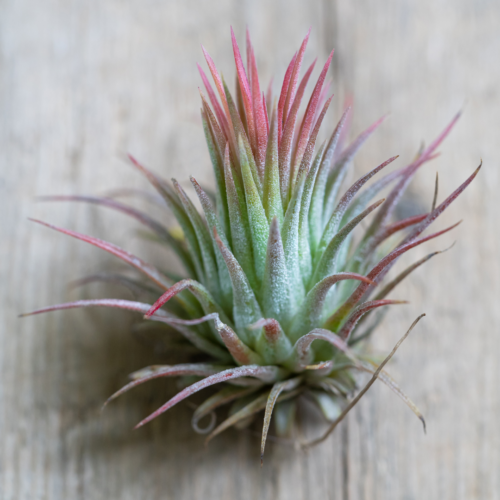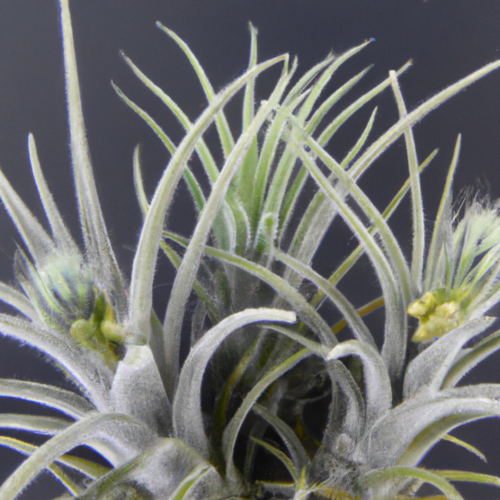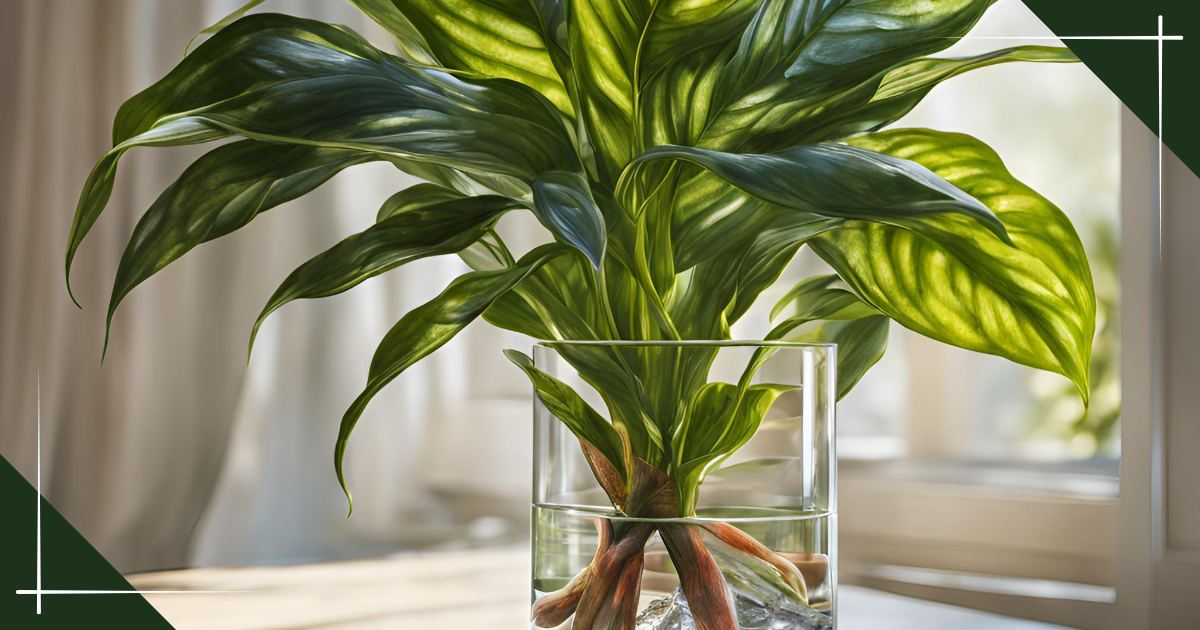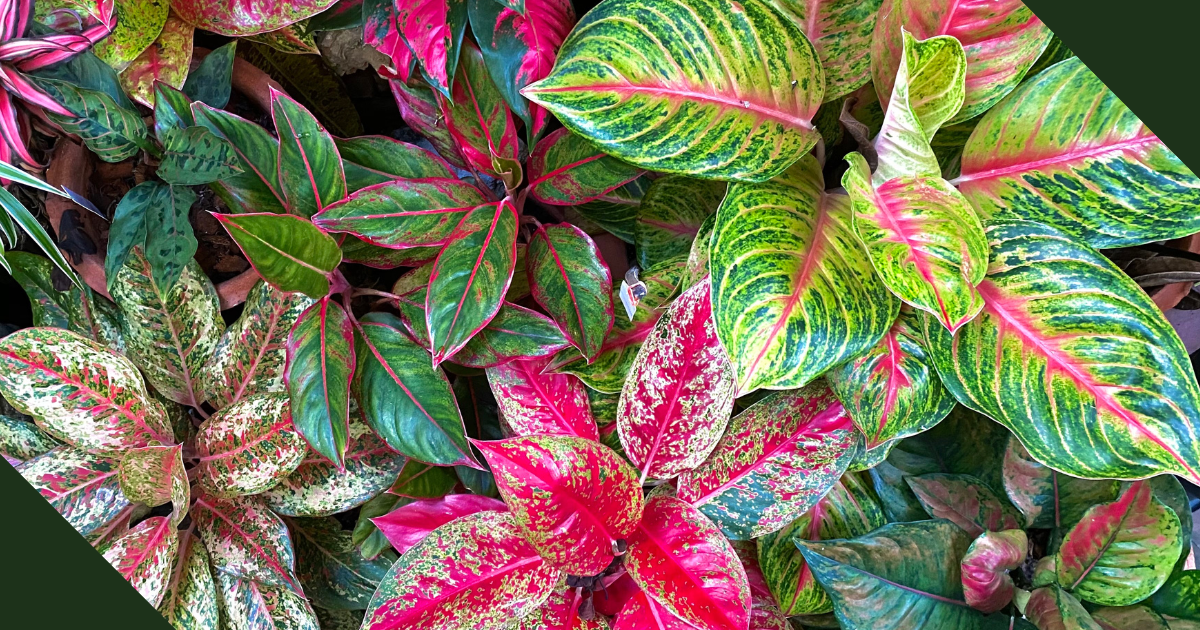Struggling to find a dynamic, easy-to-care-for indoor houseplant? Look no further than the Tillandsia Ionantha, a remarkable addition to your indoor space. Today we’re going to talk a bit about what makes this plant unique, as well as how to successfully care for this plant indoors. Then we’ll wrap it up with some various display options to keep your air plant looking fabulous!
Understanding Tillandsia Ionantha
Tillandsia Ionantha, often referred to as the ‘sky plant’, comes from the Bromeliaceae, or the Bromeliad family. It is native to Central and South America, where it lives on tree branches in its native habitat. This causes it to not need any roots, adapting instead to absorb water and nutrients through its leaves!

Here are some of the most noteworthy and unique aspects of this tillandsia:
Color Transformation
The first and most striking peculiarity of the Tillandsia ionantha is its ability to change color as it grows and blooms. Nearing bloom time, the leaves transform from a healthy gray-green into a vibrant red or pink. This colour change is a signal that the plant is about to bloom, producing stunning purple and white flowers. This plant is absolutely stunning when it’s in bloom.

Clumping Habit
Another noteworthy characteristic of Tillandsia ionantha is its clumping habit. Once the plant has flowered, it will start to produce offsets, or “pups.” Over time, these pups grow alongside the mother plant (also called the parent plant), eventually forming a clump. This natural ability to produce pups means that your single air plant can eventually become an attractive and dense huddle of plants! Just keep in mind that after flowering, the parent plant will eventually die, leaving the surrounding small air plants behind.

Care Requirements for Tillandsia Ionantha:
Tillandsia Ionantha, like any other houseplant, requires some level of care to thrive indoors. Fortunately, the care requirements for this unique plant are relatively minimal. Here are some key pointers to keep in mind:
Watering
Contrary to most indoor plants, tillandsia ionantha absorbs water through its leaves, not its roots. This leaves many plant parents unsure of how to water their tillandsia air plants. The best method for watering air plants is to soak them in a water bath for 20-30 minutes every 1-2 weeks. Then let it dry out completely. Excess water is the number one killer of air plants.
Regular misting can also help your air plant thrive, especially if you live in a dry climate. However, make sure that if you are misting your air plant, that you have good air circulation. Because once again, you don’t want excess moisture around your small plant.
For more tips on how to water your air plants, as well as what to do if your plant is glued to a base, check out my post on How to Water Air Plants.

Sunlight
Tillandsia Ionantha enjoys bright, indirect sunlight. A well-lit room with plenty of natural light is ideal. However, it’s essential to avoid direct sunlight as that can cause the plant’s leaves to scorch.
I’ve also had success growing these plants under fluorescent lights as well as plant lights (as long as the light isn’t too close to the plant that it burns the leaves). So if you are struggling with your tillandsia ionantha air plant, then I would make sure it isn’t in bright direct sunlight, and then I would look at your watering methods. Because this little guy doesn’t seem too picky about its light.

Temperature
In terms of temperature, Tillandsia Ionantha prefers mild climates so it would thrive best in indoor temperatures ranging from 50 to 80 degrees Fahrenheit (10 to 27 degrees Celsius). Be sure not to expose the plant to temperatures below freezing as it may cause severe damage. This includes any placing it near any windowsills or exterior doors where it might experience cold drafts.
Nutrition
A well-balanced, water soluble fertilizer, one specifically designed for bromeliads or air plants, should be applied once a month. This gives your Tillandsia Ionantha the nutrients it needs to grow well and bloom. Always remember to dilute the fertilizer in water according to the instructions. Simply add it to your water bath and your plant will love you!
You can also get a foliar fertilizer if your air plant is glued down to its base. This allows you to simply spray its leaves and it will absorb the nutrients that it needs!

Display Options for Tillandsia Ionantha Indoors
Having such a versatile and adaptable houseplant like the Tillandsia Ionantha means you can get really creative with how you display it! There are actually a number of innovative ways you can show off this unique air plant in your living or working space. Here are a few ideas:
Terrariums
A glass terrarium can complement the beauty of the Tillandsia Ionantha. These enclosed glass or plastic containers can often simulate a mini-ecosystem for your air plant. However, because these plants need good ventilation, make sure that the terrarium has openings. Also, remember that a terrarium can replicate a humid environment, which your plant will love, but beware of overwatering and make sure that you allow your air plant to completely dry after waterings.
Metal Mesh Frames
Metal mesh frames are great since you can easily display several air plants at once, as well as easily remove them for their weekly water bath. Hanging the metal mesh frame in a place where it can receive indirect sunlight will also keep your air plant happy and healthy. Just make sure it isn’t in any hot, direct sunlight.

Driftwood or Cork Bark Displays
Driftwood and cork bark offer natural and stylish display options for your Tillandsia Ionantha. As epiphytes, these plants are used to growing on tree trunks and branches in their native habitats. Therefore, attaching your air plant to a piece of driftwood or cork bark can replicate this natural environment, creating an attractive display. One thing to note is the lack of nutrients these materials provide, meaning supplemental feeding may be required
Each of these display options has its own benefits and drawbacks. So, the choice will ultimately depend on your personal preference and the conditions in your home. Be aware that each option can impact the amount of light, air, and moisture your Tillandsia Ionantha receives, ultimately affecting its care needs.

Conclusion
That’s it for this post on how to care for Itllandsia air plants! I hope you’ve learned a bit more about what makes this little plant so unique, as well as a few things to help your little guy survive indoors! Ultimately, with the right care and placement, and with caring for any new pups, you should be able to enjoy the beauty of your tillandsia for years!
Tillandsia Ionantha FAQs
Tillandsia Ionantha is a species of air plant native to Central America. It’s popular as an indoor houseplant due to its striking pineapple-top appearance and the unique color-changing process it undergoes when it flowers, changing from grey-green to a bold red!
Caring for a Tillandsia Ionantha involves providing it with bright, indirect light, giving it weekly or bi-weekly water baths, and ensuring a suitable temperature. This plant also benefits from regular feeding with a bromeliad or tillandsia fertilizer.
Tillandsia Ionantha is versatile in terms of display options indoors. It can be mounted on a piece of driftwood, placed in a terrarium, or simply arranged on a shelf, among many other options. The absence of traditional roots makes it adaptable to various display mediums. However, it is easiest to care for when it is not glued to its base.
A peculiar aspect of Tillandsia Ionantha is its blooming process. The leaves change color, becoming a beautiful array of reds, pinks and purples, before a violet flower emerges. Also, the plant has minimal root systems as it draws nutrients from the surrounding air through its leaves, and not through its roots like most traditional plants.



